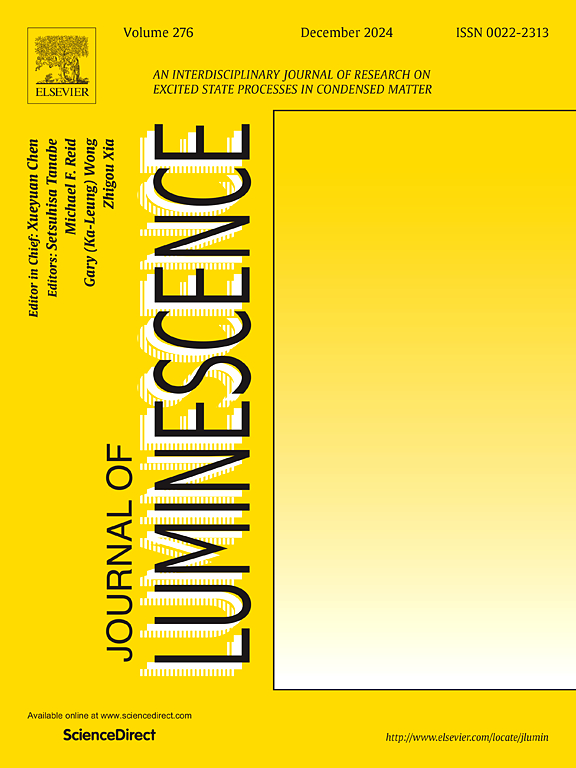机器学习辅助四基色发光二极管显示峰值波长预测与任意Rec. 2020
IF 3.3
3区 物理与天体物理
Q2 OPTICS
引用次数: 0
摘要
色域是LED(发光二极管,LED)显示屏质量评价的重要指标。基于遗传算法(GA)和LM-BP (Levenberg-Marquardt Back-Propagation, LM-BP)神经网络模型,提出了一种精确预测四基色RYGB-LED显示屏(Red-R, Yellow-Y, Green-G, and Blue-B led)或任意色域QDs (Quantum Dots, QDs)峰值波长的有效方法。将遗传算法应用于考虑特定色域阈值的CIE (Commission Internationale del’eclairage, CIE)色度坐标的优化,并基于优化的CIE色度坐标,应用LM-BP神经网络模型预测四基色RYGB-LED显示屏的峰值波长,实现了从色域到峰值波长的led光谱设计。采用双高斯函数模拟了四主RYGB-LED显示屏的光谱功率分布。每种颜色共2000个光谱数据集,按8:1:1的比例分为训练集、验证集和测试集。采用K-fold交叉验证确定LM-BP神经网络模型的超参数,并在测试集中对最优模型进行测试,记录均方误差来评估过拟合。结果表明,LM-BP神经网络模型具有优异的性能和泛化能力,并将该模型应用于CIE色度坐标集,从色域出发设计LED显示屏的峰值波长,指导LED和量子点组成的高质量四基色RYGB-LED显示屏的制造。本文章由计算机程序翻译,如有差异,请以英文原文为准。
Machine-learning assisted prediction of peak wavelengths in four-primary light-emitting diode displays with arbitrary Rec. 2020
The color gamut is an important quality evaluation metric for LED (Light-Emitting Diode, LED) displays. Based on GA (Genetic Algorithm, GA) and LM-BP (Levenberg-Marquardt Back-Propagation, LM-BP) neural network model, this paper proposes an effective method for the precise prediction of peak wavelengths in four-primary RYGB-LED displays (Red-R, Yellow-Y, Green-G, and Blue-B LEDs or QDs (Quantum Dots, QDs) with arbitrary values of color gamut. The GA is applied to optimize the CIE (Commission Internationale de l’Eclairage, CIE) chromaticity coordinates in consideration of specific color gamut thresholds, and the LM-BP neural network model is applied to predict the peak wavelengths of four-primary RYGB-LED displays based on the optimal CIE chromaticity coordinates, which enables the spectral design from color gamut to peak wavelengths of LEDs. The spectral power distribution of four-primary RYGB-LED displays is simulated using double-Gaussian functions. A total of 2000 spectral datasets for each color are divided into training sets, validation sets, and test sets in a ratio of 8:1:1. The K-fold cross-validation is used to determine the hyperparameters in LM-BP neural network model, and the optimal model is tested in the test sets, recording mean square error to assess the overfitting. Results indicate that the LM-BP neural network model exhibits excellent performances and generalization capabilities, and this model is applied to CIE chromaticity coordinate sets to design peak wavelengths of LED displays from the color gamut, guiding the manufacturing of high-quality four-primary RYGB-LED displays consisting of LEDs and QDs.
求助全文
通过发布文献求助,成功后即可免费获取论文全文。
去求助
来源期刊

Journal of Luminescence
物理-光学
CiteScore
6.70
自引率
13.90%
发文量
850
审稿时长
3.8 months
期刊介绍:
The purpose of the Journal of Luminescence is to provide a means of communication between scientists in different disciplines who share a common interest in the electronic excited states of molecular, ionic and covalent systems, whether crystalline, amorphous, or liquid.
We invite original papers and reviews on such subjects as: exciton and polariton dynamics, dynamics of localized excited states, energy and charge transport in ordered and disordered systems, radiative and non-radiative recombination, relaxation processes, vibronic interactions in electronic excited states, photochemistry in condensed systems, excited state resonance, double resonance, spin dynamics, selective excitation spectroscopy, hole burning, coherent processes in excited states, (e.g. coherent optical transients, photon echoes, transient gratings), multiphoton processes, optical bistability, photochromism, and new techniques for the study of excited states. This list is not intended to be exhaustive. Papers in the traditional areas of optical spectroscopy (absorption, MCD, luminescence, Raman scattering) are welcome. Papers on applications (phosphors, scintillators, electro- and cathodo-luminescence, radiography, bioimaging, solar energy, energy conversion, etc.) are also welcome if they present results of scientific, rather than only technological interest. However, papers containing purely theoretical results, not related to phenomena in the excited states, as well as papers using luminescence spectroscopy to perform routine analytical chemistry or biochemistry procedures, are outside the scope of the journal. Some exceptions will be possible at the discretion of the editors.
 求助内容:
求助内容: 应助结果提醒方式:
应助结果提醒方式:


